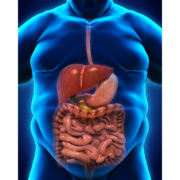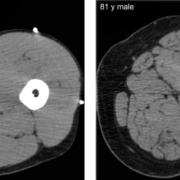Spot Reduction? Maybe
Researchers collected data from four prior studies that put a group of sedentary overweight and obese men and women on a walking program. To determine the distribution of muscle, fat, and bone, they took MRIs of their entire body. That gave the researchers not only the amount of muscle and fat mass, but exactly where that muscle and fat were located.
Once researchers assessed the fitness level of these subjects, they developed an exercise prescription for them that had them exercise at 60% to 75% of their maximal aerobic capacity for 30 minutes a session, five days a week, for six months. Their heart rates were monitored throughout the exercise session to make sure that they did not exercise above those levels; that also allowed subjects to increase the speed or grade of the treadmill as they got fitter. The subjects used a food log to track all the food they ate.
Results
Did the subjects lose some weight? Yes. Even though they were trying to maintain what they ate, they were using more calories in exercise than they had been, so they did lose some weight—in this case, just a little over two pounds in the exercising group. The controls actually gained about half a pound in the six-month study.
Now to the good stuff. The results of the MRI showed that there were definitely regional differences in skeletal mass and fat mass. As was expected, the exercising muscles, primarily the hips, thighs, and legs, saw maintenance of the skeletal muscle mass but a decrease in the fat mass. In the upper part of the body, there was a slight decrease in muscle mass in the arms and upper torso with a very slight decrease in fat mass compared to controls.
The Bottom Line
So what does this all mean? First, because the mean age was around 55, maintaining muscle mass is critical—this is the time of life when age-related muscle loss starts to occur.
Second, if this were confirmed in several clinical trials, it would mean that there should be a focus on weight training or aerobic training that utilizes the entire body. Elliptical trainers and recumbent cross trainers come to mind as something that would use both the arms and the legs, so that may be part of the solution. And from personal experience, I can say that dance classes can have a similar effect.
In order to preserve muscle mass, exercising all your muscles is important; 60 to 75% of maximal fitness would be classified as moderate exercise. That means you don’t have to kill yourself in order to obtain the benefits of regular exercise to your cardiovascular system. Add to that some weight training a few days a week, and you have your own prescription for sustaining muscle mass and maybe losing just a little bit of fat mass along the way. But what if I told you that you could increase the loss of fat mass, especially in your abdominal region, by changing up the intensity of your workouts for a few weeks? Next week’s Memos will look at that research.
What are you prepared to do today?
Dr. Chet
Reference: MSSE. 2024. 56(5):776-782.









